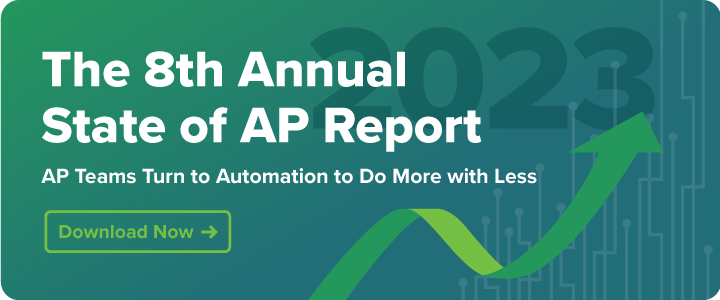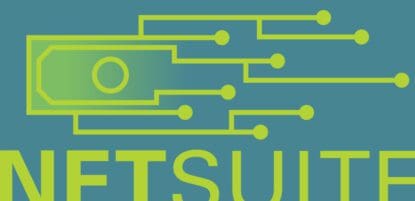Making foreign exchange (FX) payments has long been a burden for many companies working with international suppliers. Between hidden fees, lengthy processing times, multiple parties within the wire feed, and payment reconciliation issues, the risks and headaches associated with international payments often eat into the benefits of doing business overseas. However, accounts payable (AP) automation platforms with integrated FX payments capabilities have since made these payments easier to initiate, with full visibility into the process and better all-around security. Let’s take a closer look at the traditional process for international payments and the way businesses can best handle FX payments going forward.
What are Foreign Exchange (FX) Payments?
Foreign Exchange payments are payments involving the conversion of money from one currency to another, between a business and their suppliers. For example, a business with a USD bank account might need to pay an invoice where their supplier is requesting payment in Euros. FX payments complete the full Invoice-to-Pay process for foreign currency invoices, allowing organizations to process and pay bills from international suppliers in currencies other than USD.
Traditionally, businesses make FX payment by initiating international wire transfers through their bank. Banks lock-in exchange rates daily and charge an extra margin to hedge against intraday currency fluctuations. Once payment information has been submitted and approved by the issuing party, a wire transfer is initiated and international suppliers are paid for goods and services.
How Do Traditional FX Payments Work?
Traditionally, the FX payment process is quite intricate and time consuming with a lot of moving parts. Standard FX payment execution typically involves the following steps:
- Step 1. Company Goes to a Bank Portal to Create an International Wire
- Step 2. Company Adds the Vendor Information for the Wire
Name, Account Number/IBAN, Routing Code/SWIFT/BIC - Step 3. Company Enters the Invoice Amount and Currency
- Step 4. Bank Provides the Daily Exchange Rate
Banks provide locked-in exchange rates on a daily basis, along with a transaction fee (typically around $35) in order to accommodate any moving exchange rates. - Step 5. Company Approves the Wire
- Step 6. Bank Initiates the Wire
At this point the funds are taken from the company and visibility is lost. The business is now unable to view payment status and intermediary fees can apply. - Step 7. A Series of Banks (or Intermediaries) Handle Money Transfer
- Step 8. Wire is Received by the Vendor
The standard process of FX payments requires businesses to re-enter and submit vendor information each time a transaction is created. Not only is this time consuming, it is also prone to error. If one number is incorrect or there is a spelling mistake within the creation of the vendor’s profile, funds can be delayed.
Traditional FX payments also leave a business blind since banks do not provide transparency within the wire lifeline. From the moment a wire has been initiated, a series of banks (or intermediaries) handle the money transfer from point A to point B and charge fees that chip away at the total invoice payment. So say the initial wire transfer was $1,000, by the time the vendor sees their payment, the total sum has been lessened from hidden fees, as well as international sender fees and international receiver fees.
Traditional wire transfers can take up to 5 days to process, lack visibility, and leave suppliers wondering when they’ll be paid. Companies need to implement a more efficient and cost effective FX payment process if they want to nurture relationships with strategic international vendors.
The State of International Payments
Between 2010 to 2019, international payments grew by roughly 7% annually. In 2020, international payments were projected to reach 2.12 trillion dollars by McKinsey & Company. However, border closures and pandemic-related lockdowns caused a global economic decline that drastically affected the payments industry. As we continue into 2022, there is optimism that global economies will recover. In the coming year, it is predicted the value of global international payments will surpass the initial 2.12 trillion dollar prediction for 2020.
Why Choose MineralTree for FX Payments?
MineralTree’s AP automation platform simplifies the traditional FX payment process and gives businesses the transparency they need to conduct international payments with ease and efficiency. Here we have outlined the process MineralTree uses to optimize FX payments:
- Step 1. Company Enters and Saves Vendor Details & Bank Information into the MineralTree Platform
- Step 2. Company Authorizes Payments in MineralTree and Locks in Real-Time Exchange Rates
- Step 3. Funds Are Pulled From the Company’s Bank Account Via Reverse Wire (Auto Draft)
- Step 4. Supplier Receives Funds Within 1-2 Days Along with Email Remittance
Not only is this process simplified and regulated through one platform, MineralTree’s international transfers offer benefits over traditional bank transactions. With MineralTree, you gain the ability to complete faster transfers, full visibility into payment processing, zero intermediary fees, and suppliers receive an amount that’s equal to the amount billed in their initial invoice. Discover how MineralTree’s FX international payment solution makes handling payments easier than ever by requesting a demo.
FAQ about FX Payments
How Do I Fund FX Payments?
With MineralTree, FX payments can be initiated using the same workflow for submitting domestic payments via check, ACH, and virtual card. Once the payment is authorized, and the exchange rate locked, the FX payment is funded from your bank account via reverse wire.
What Are MineralTree’s Foreign Exchange Rates?
MineralTree’s exchange rates reflect the real-time fluctuations of currency exchange around the world. The MineralTree platform allows businesses to ‘lock in’ on real-time exchange rates when initiating a transaction. That means the risk of rates increasing while performing a wire transaction are eliminated and businesses have full transparency into the sum of money being transferred.
Banks typically charge a $35 transaction fee for each individual international wire transfer. With MineralTree, a business only pays a $20 transaction fee for transactions under $5,000. For currency conversions $5,000 or above, the transaction fee is waived entirely!
How Do I Initiate an FX Payment with MineralTree?
A business only has to submit a vendor’s bank information once. This information will be saved within the MineralTree platform for all future payments to that supplier. From there, when a business is ready to initiate an FX payment, they only need to review invoice details and approve payment amounts and exchange rates. Then, MineralTree submits the wire transfer and tracks its process as it is sent to their vendor’s bank account. The process is straightforward and transparent, just like it should be.
Do Some Currencies Have Special Requirements?
No, but certain countries have special requirements. The vast majority of countries who previously had foreign exchange controls have since removed them. However, specific countries may have special limitations on foreign exchange and may require further forms and paperwork to be completed.
How Do I Check My Payment Status?
MineralTree’s platform allows a business to check their payment status in real-time. Once a payment has been successfully deposited into the beneficiary’s account, the payment status is moved to ‘Paid’ and the invoice is closed in the customer’s ERP.
How Long Does It Take a Transaction to Reach a Payee?
As opposed to traditional FX payment processing times that can take up to 5 days, MineralTree’s FX payment transactions only take 1-2 days to complete. Not only does this make for a more efficient FX payment process, it also strengthens supplier relationships by ensuring payments are made on time and include email remittance.
How Secure are International Payment Transactions?
Traditional international payment transactions are susceptible to disruption due to the large number of parties involved in completing a single transaction. However, with MineralTree, organizations can rest assured that receiving organizations have undergone a compliance check that guarantees transfers are only sent out to secure and regulated entities. Additionally, payments require 2-factor authentication that only authorized personnel are capable of accessing. From the point a wire transfer is initiated to when money is received, businesses have full transparency into the wire timeline and have access to this information at all times.
Check out our on-demand webinar to continue learning: “Unraveling the Hidden Cost and Complexity of FX Payments”




